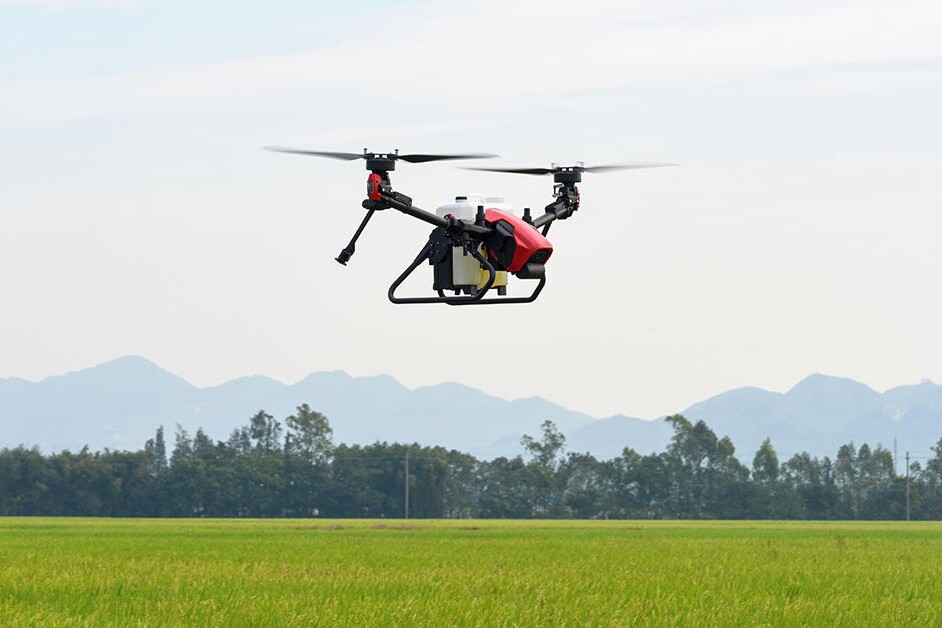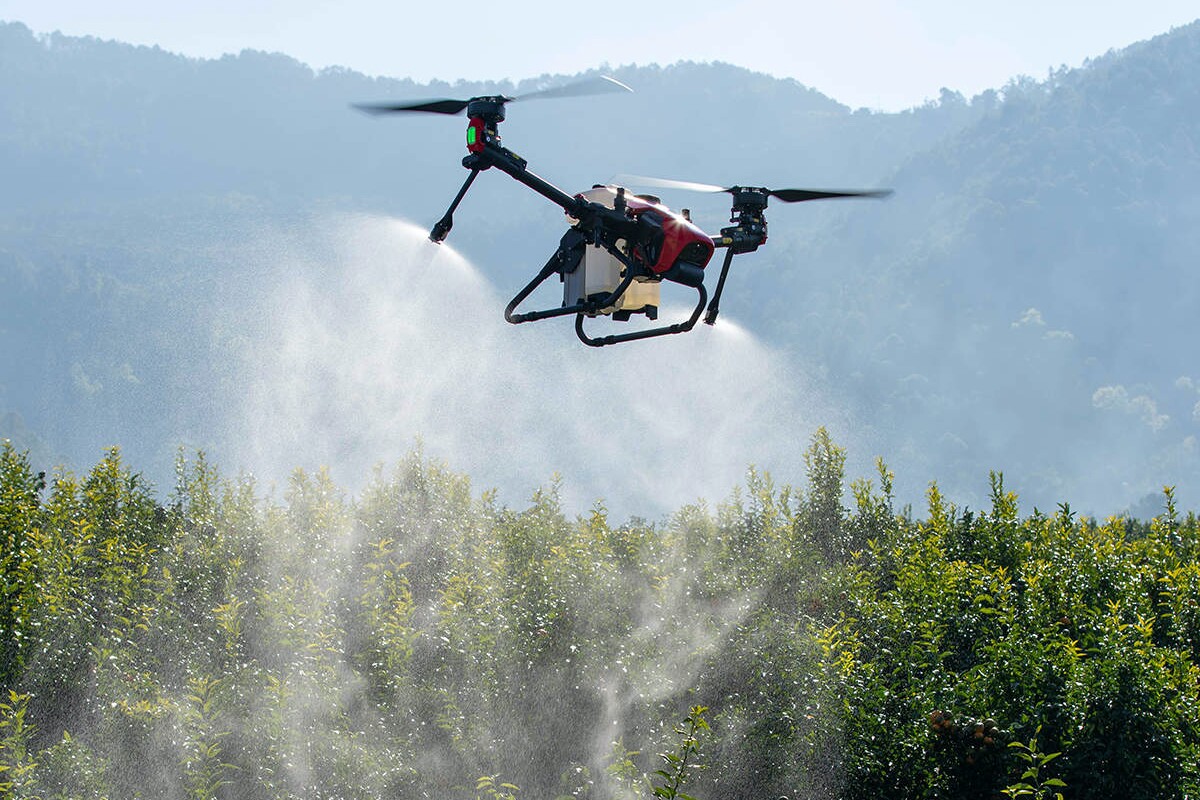Usually when we think of multicopter drones, we picture aircraft with four or more rotors. The V40 agricultural drone takes a different approach, using two tilting two rotors in an effort to improve range and spraying efficiency.
Manufactured by Chinese company XAG, the modular V40 comes with a 16-liter (4.2-gal) liquid tank for herbicide/pesticide, a 25-liter (6.6-gal) granular container for seeds, and it has two folding arms – each of those arms has one rotor (a set of two rotor blades) on top, and a spray nozzle on the bottom.
Regular multicopter drones are able to move forwards, backwards, left and right by varying the distribution of thrust between their four or more fixed-angle rotors. The V40 only has the two rotors, but it gets around that limitation by being able to electronically tilt them fore and aft relative to the arms.

XAG
According to XAG, this system is much more energy-efficient than traditional multicopter setups. Although the company hasn’t provided any figures on battery range, a similar “bicopter” manufactured by Zero Zero Robotics is claimed to be able to fly for 50 minutes per charge. By contrast, most quadcopter drones top out at about 30 minutes.
Additionally, XAG claims that because the two nozzles are located directly below the two rotors, the resulting downdraft distributes the sprayed liquid in a more focused, concentrated pattern than would otherwise be possible. This means that less of the chemicals are wasted, as they aren’t randomly blown all over the place.

XAG
Utilizing onboard GPS and a downward-facing terrain radar module, the V40 begins by flying over a field, mapping out its boundaries and geographical features. It subsequently uses that data to autonomously perform spraying or seeding runs, utilizing an additional forward-facing radar system to avoid any obstacles that might pop up. Users can also take manual control via a radio remote, if desired.
Potential buyers should contact XAG for a quote. The V40 can be seen in action, on YouTube.
Source: XAG
Source of Article
